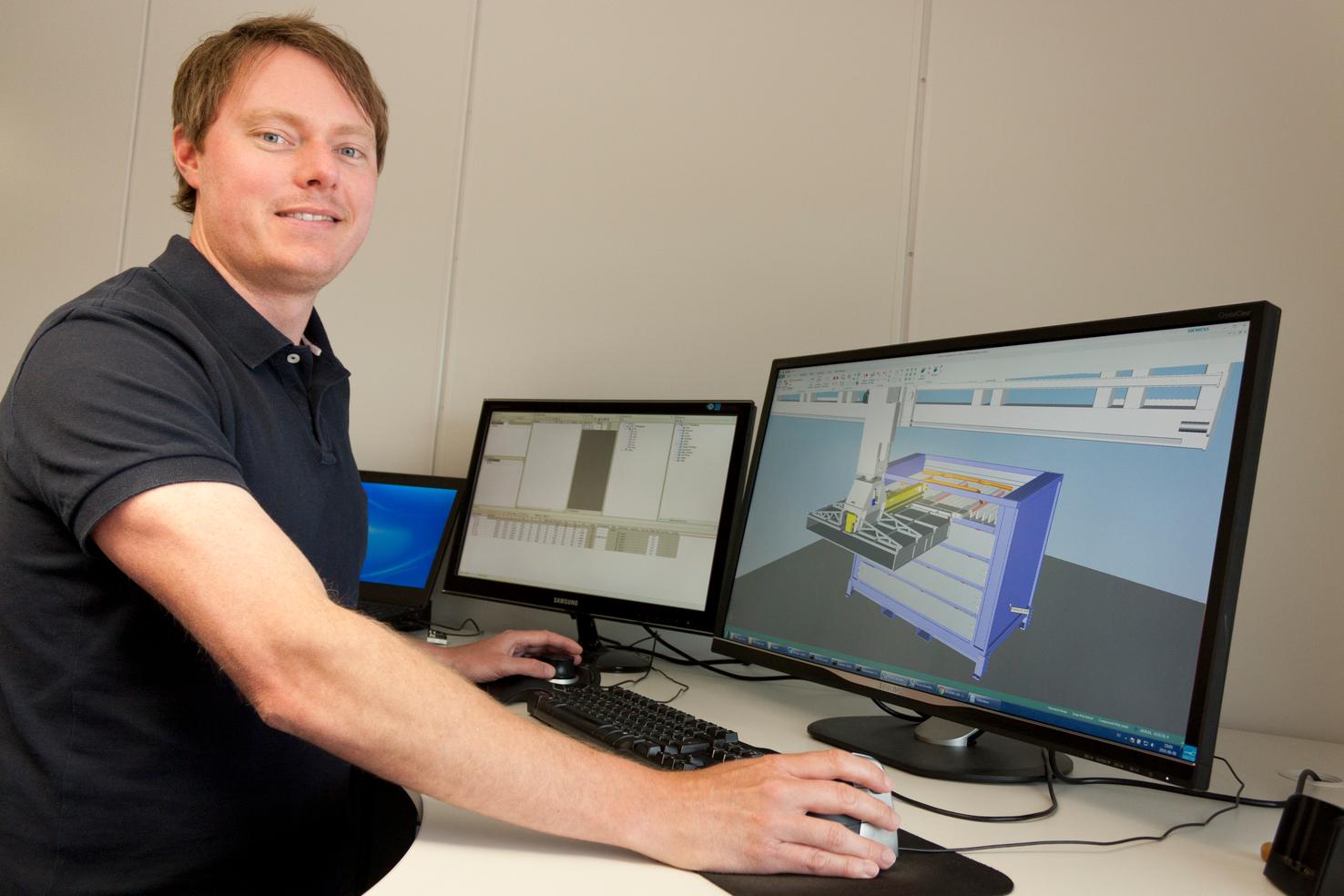It is now possible for AP&T’s customers to get an exact picture as early as the tendering stage of how their planned production line will function and perform in an authentic environment. Using an advanced simulation program, AP&T’s technical sales team can visualize the production process and specify cycle times and production capacity with almost 100% precision.
“What the simulation shows is basically identical with what the customer will receive. For companies on the verge of investing in a production line worth many millions, having the best possible basis upon which to make decisions means making them is both easier and more secure,” says Magnus Svenningsson, director technical sales at AP&T.
The simulation program, Process Simulate, was developed by Siemens and is used within the automotive industry where AP&T has many of its largest customers. In order to satisfy AP&T’s specific needs, distributor Summ Systems in Linköping, Sweden together with Siemens, helped to produce a working method for discrete event simulation.
“Together we have produced an excellent tool for discrete event simulation, whereby the machines included in the production line can communicate with each other through a virtual control system. This allows us to identify potential bottlenecks in the process early on, which otherwise would have been impossible to detect in traditional time-based simulation,” says Andreas Vaktel, simulation engineer at AP&T.
“Collaboration has been important in several respects since AP&T is a very prominent supplier within the manufacturing industry, and is active within several industries. That the company is now taking a step into what we call the ‘digital factory’ and that it recognizes the value of robotics simulation and programming with Process Simulate for ‘discrete event simulation’ constitute continued and strong confirmation of Summ System’s delivery and offering,” says Dick Nyström, CEO of Summ Systems.
Saves time at each stage
The simulation program also creates new opportunities to develop a customized production solution in a shorter amount of time. 3D layouts can be easily exported from a CAD environment to Process Simulate and vice versa. Potential adjustments can be made directly in the simulation program, which streamlines design work and results in shorter lead times.
The program is also readied for virtual commissioning, which means that when the finished production line is in place at the factory, the simulation program can be used to start up the machines. It is quite simply possible to create a “digital twin” that is downloaded to the line’s control system (PLC), and which ensures that the machines are run in exactly the same way as during simulation. This saves valuable time and enables production to get under way quickly.
